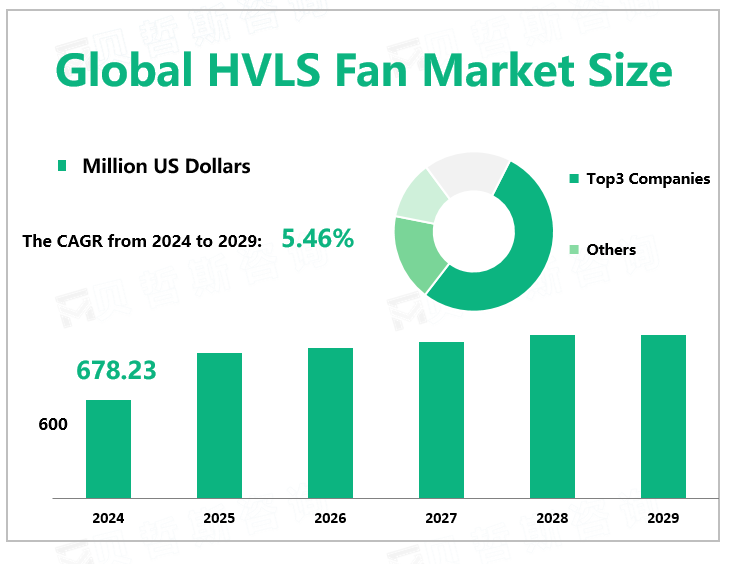Global HVLS Fan Market Overview
According to Global Market Monitor, the global HVLS fan market size will reach $678.23 million in 2024 with a CAGR of 5.46% from 2024 to 2029.High-volume low-speed (HVLS) fans are generally ceiling fans, moving slowly and distributing large amounts of air at low rotational speed.
Energy Efficiency
HVLS fans are specially designed industrial fans that effectively circulate large volumes of air at lower speeds, thereby enhancing overall space temperature control and air quality. The main advantage of HVLS fans is their energy efficiency. HVLS (High Volume, Low Speed) fans are cleverly designed to circulate large volumes of air at low speeds, effectively covering large industrial or commercial spaces. Unlike traditional fans, these giant fans maximize airflow without having to spin quickly, ensuring they save energy and run efficiently. By enhancing air circulation, HVLS fans help achieve significant energy savings while improving comfort and protecting products by maintaining consistent environmental conditions. This reduces businesses' reliance on traditional air conditioning systems, which can be energy-intensive and costly to run. Therefore, using HVLS fans can reduce energy consumption, which is in line with sustainability goals and can lead to significant cost savings. Additionally, industrial ceiling fans can be used with HVAC systems to help distribute conditioned air more evenly. This reduces the workload on HVAC equipment, resulting in lower energy usage, longer system life, and lower maintenance costs. Increasingly stringent energy efficiency regulations and growing concern for environmental sustainability are driving companies to seek energy-saving solutions, which is driving the expansion of the HVLS fan market.

It is estimated that HVLS fans can save up to 30% to 70% of conventional fan energy consumption. Given its high energy efficiency, longer shelf life, low power consumption, and cost-effectiveness, it is highly appreciated by consumers. It is expected that in the next few years, the global HVLS fan market will have a bright future. Worldwide, HVLS fans provide comfort, efficiency, and more, and can also reduce cost consumption. The continuous increase of downstream demand and the technological progress of HVLS fans have provided important development opportunities for the HVLS fan industry. The many countries' governments' emphases on energy consumption and the replacement of traditional electric fans with HVLS fans provide important opportunities for the development of HVLS fans.
HVLS FansAre More and More Popular in the Industry.
High-capacity, low-speed industrial ceiling fans are designed to circulate air in facilities more efficiently. As air is drawn from above the fan and pushed down in a conical shape to the floor below, the large-capacity low-speed fan slowly circulates a large amount of air. Large capacity low-speed fans benefit all year round, creating a more comfortable environment while saving energy costs. As governments around the world pay more attention to energy consumption, high-capacity low-speed fans - efficient, cost-effective commercial ceiling fans - are being used in warehouses, distribution centers, stadiums, and a variety of other applications.
|
By Type |
8'-12' (12' included) |
|
12'-16' (16' included) |
|
|
16'-18' (18' included) |
|
|
18'-20' (20' included) |
|
|
20'-24' (24' included) |
|
|
Others |
|
|
The 18'-20' (20' included) segment accounts for the largest share of the market. |
|
|
By Application |
Industrial |
|
Commercial |
|
|
Others |
|
|
The industrial segment occupies the biggest share. |
We provide more professional and intelligent market reports to complement your business decisions.